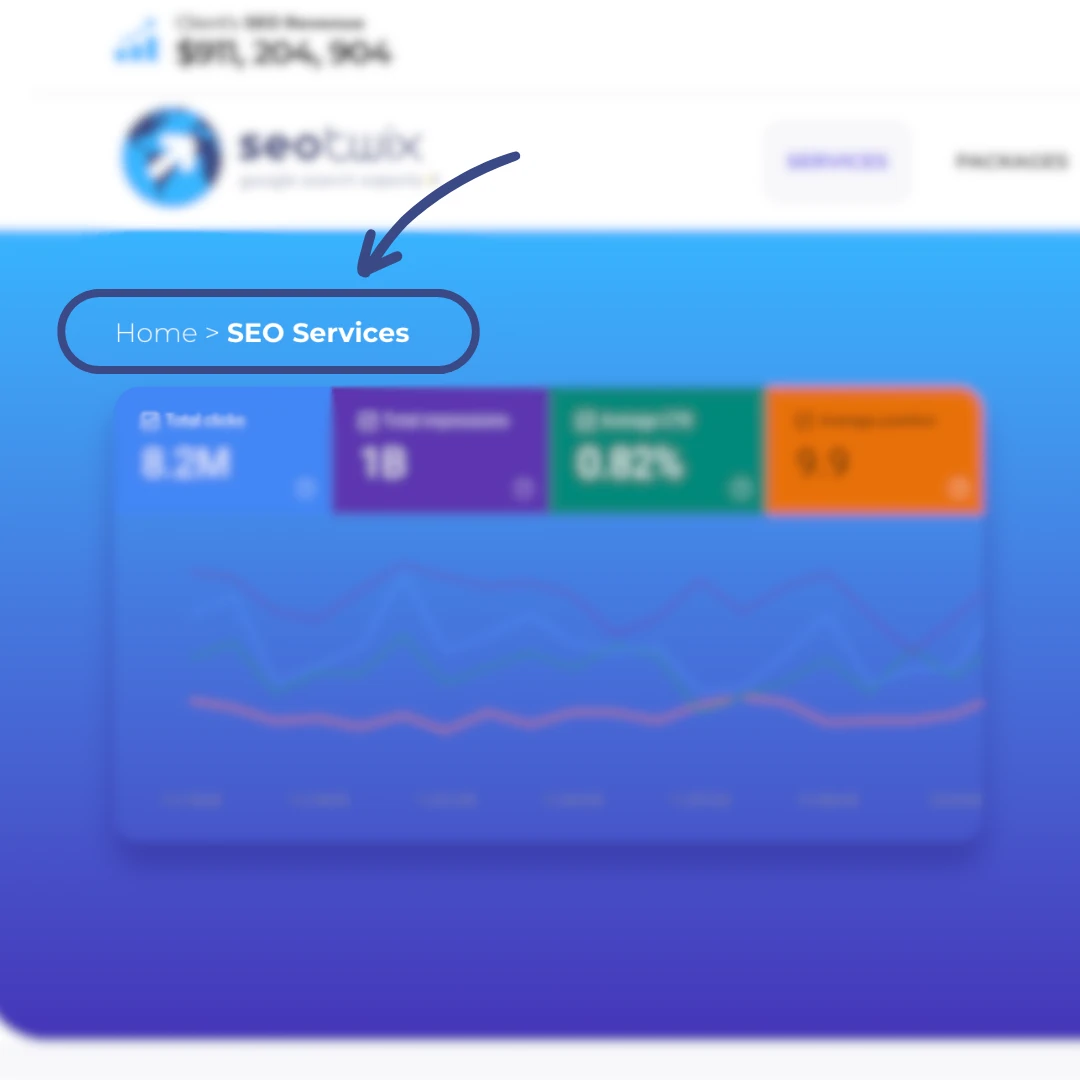If you’re looking to make your website easier to navigate and rank better on search engines, adding breadcrumbs is a smart move. Let’s break down what breadcrumbs are, why they’re important for SEO, and how you can add them to your website without any problems.
What Are Breadcrumbs?
Breadcrumbs are a type of navigation on websites that help you keep track of where you are. They’re a row of links at the top of a page that shows you the path you took to get to the current page, starting from the home page.
It’s a handy tool for clicking back to previous pages without having to hit the “back” button a bunch of times or start over from the homepage. They’re called breadcrumbs because they’re like leaving a trail to follow back to where you started, making browsing a site easier. There are a few types of breadcrumbs, but the most common are ‘location-based‘ (showing the page hierarchy) and ‘path-based‘ (showing the user’s path). For most websites, location-based breadcrumbs are the way to go.
Are Breadcrumbs Important For SEO?
Breadcrumbs are a big deal for SEO, and here’s why: they make your website easier to use and help search engines understand what your site is about.
First off, breadcrumbs improve the experience for your visitors. When people can easily find their way around your site, they’re more likely to stick around, visit more pages, and come back in the future. Happy visitors mean a lower bounce rate. Search engines notice this and think, “Hey, this site must be helpful,” which can boost your rankings.
Search engines try to figure out how your website is structured, and breadcrumbs are a big help. By showing the path from the home page to the page the user is currently on, breadcrumbs lay out a clear map of your site. This clarity can help search engines index your content better, making it more likely for your pages to show up in search results.
Breadcrumbs naturally include keywords related to your site’s content and structure. Since they appear on every page, they reinforce to search engines what your site is about, using those important keywords without any extra effort from you.
Another big plus is that breadcrumbs are relatively easy to add to most websites. Whether you’re using a content management system like WordPress or building your site from scratch, there are simple tools and plugins available to help you add breadcrumbs.
How to Add Breadcrumbs to Your Website
Adding breadcrumbs might sound technical, but it’s quite easy. Here’s how you can do it, step by step:
For WordPress Users
There are two ways to add breadcrumbs to the website. The first way – plugins. It’s the easiest way to add breadcrumbs on WordPress. Yoast SEO is a popular choice. The other one is the theme. Some WordPress themes come with built-in breadcrumb options. Check your theme’s settings and documentation to see if it’s a feature and how to enable it.
Let’s walk through how to add breadcrumbs to your WordPress website using the Yoast SEO plugin.
Step 1: Install Yoast SEO
First off, if you haven’t already got Yoast SEO on your WordPress site, you’ll need to install it. Head over to your WordPress dashboard, click on “Plugins” > “Add New”, and type “Yoast SEO” into the search bar. Find it in the search results, click “Install Now”, and then activate it.
Step 2: Enable Breadcrumbs
Once Yoast SEO is up and running, it’s time to turn on the breadcrumbs feature. Here’s how:
- In your WordPress dashboard, go to “SEO” > “Search Appearance”.
- Click on the “Breadcrumbs” tab.
- You’ll see an option to “Enable Breadcrumbs”. Go ahead and switch that to ‘Enabled’.
- Below that, you’ll find some settings you can tweak to customize how your breadcrumbs look. This includes what separator symbol you’d like between the breadcrumb links, and what you want to call your homepage in the breadcrumb path.
Step 3: Customize Your Breadcrumbs (Optional)
Yoast SEO offers several settings to make your breadcrumbs work just right for your site. You can decide what to call your homepage, choose a separator (like a slash, arrow, or dash), and even set a prefix for breadcrumb paths on certain pages. Play around with these settings to see what looks best on your site.
Step 4: Add Breadcrumbs to Your Site
Now, this part gets a bit technical, to display the breadcrumbs on your site, you’ll need to edit your theme’s files. Here’s a simple way to do it:
- Go to “Appearance” > “Theme Editor” in your WordPress dashboard.
- Open the file where you want the breadcrumbs to appear. This might be your header.php, single.php, page.php, or another file, depending on your theme.
- Find the spot in the file where you want your breadcrumbs to show up and paste this bit of code: <?php if ( function_exists(‘yoast_breadcrumb’) ) { yoast_breadcrumb( ‘<p id=”breadcrumbs”>’,'</p>’ ); } ?>
Step 5: Check Your Work
After adding the breadcrumbs, take a look at your site to see them in action. Navigate through a few pages to make sure they’re showing up correctly and leading visitors through your site as expected.
If this sounds too hard, it’s better to hire an SEO company, so your website will get not only breadcrumbs but a complex optimization.
For Other Platforms
Website Builder Tools: If you’re using a platform like Shopify, Wix, or Squarespace, look for breadcrumb options in your settings. Many builders have this feature and allow you to turn it on with a click.
Manual Coding: For those with a custom-built website or if your platform doesn’t offer an easy option, you might need to add breadcrumbs manually. This involves editing your website’s HTML and CSS. You can find plenty of online tutorials on how to add breadcrumbs or consider hiring a developer if you’re not comfortable with coding.
Once you’ve added breadcrumbs, test them to make sure they’re working as expected. Use Google’s Rich Results Test tool to see if your breadcrumbs are set up correctly and recognized by search engines.
Breadcrumbs are a small but mighty tool in your SEO toolkit. They improve user experience, help search engines understand your site better, and can contribute to better search rankings. Whether you’re using WordPress, another platform, or coding your site from scratch, adding breadcrumbs is doable and definitely worth the effort.
Remember, the goal is to make your website as user-friendly and accessible as possible, and breadcrumbs are a step in the right direction. So, go ahead and give your site visitors and search engines a clear path through your website. It’s a straightforward upgrade with a significant impact.






